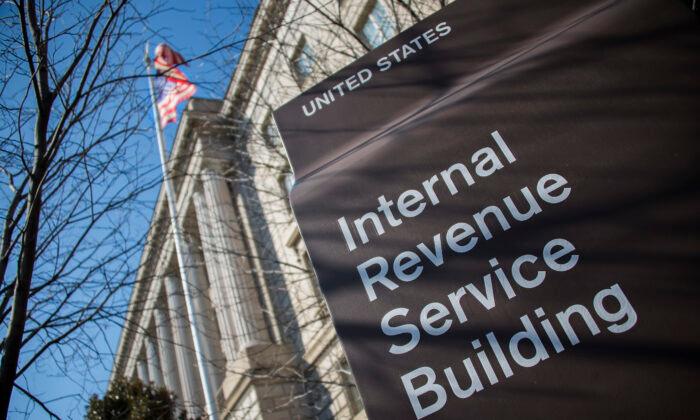The Internal Revenue Service (IRS) has cautioned that many taxpayers should expect a smaller refund this tax season because of tax law changes including the expiration of pandemic-related stimulus payments that would otherwise have boosted refund balances.
Recovery Rebate Credit Ends
Millions of Americans received pandemic support in the form of Recovery Rebate Credit payments, for which people were eligible if they didn’t get their due full amounts via stimulus checks, formally known as Economic Impact Payments.Three rounds of stimulus checks went out as advance payments, with missing amounts getting a top-up in the form of Recovery Rebate Credits in subsequent tax seasons.
Missing first- and second-round stimulus checks could only be claimed on a 2020 tax return.
Third-round stimulus checks were discontinued in December 2021 and missing amounts could only be claimed on a 2021 tax return filed in 2022.
Missing third-round amounts cannot be claimed on 2022 tax returns, which are to be filed by the April 18 tax deadline for most taxpayers.
People can apply for a six-month extension of time to file but this only extends the filing deadline while any taxes owed must be paid by April 18 to avoid late payment penalties.
Child Tax Credit Changes
Another possible reason some tax filers will see lower returns this filing season relates to changes to the Child Tax Credit (CTC) program.The American Rescue Plan also made the credit fully refundable, while sending half the credit to families in monthly installments for the second half of 2021. Families were eligible to claim the other half on their 2021 tax returns.
While there was a push by Democrat lawmakers and progressive advocates to extend the CTC enhancement, it failed to make it into the $1.7 trillion omnibus spending package.
This means that the CTC has been reduced for 2022 tax returns to $2,000 for each dependent child, regardless of age. The credit amount begins to phase out where adjusted gross income goes over $200,000 and $400,000 for joint filers.
The CTC is a dollar-for-dollar reduction in tax, meaning available CTC credit can only reduce one’s tax bill to zero while the unused portion cannot be provided as a refund.
However, some taxpayers may be eligible for an Additional Child Tax Credit (ACTC), which would allow them to receive up to $1,500 of the $2,000 CTC as a refund on their 2022 tax return this filing season.
Child And Dependent Care Credit Reduced
A tax credit that working parents can use to help cover child care costs or that people with adult dependents can use for the same purpose is lower in 2022.For tax year 2021, qualifying expenses were raised from $3,000 to $8,000 for one qualifying person and from $6,000 to $16,000 for two or more. The percentage eligible for the credit was increased from 35 percent to 50 percent.
But for 2022, qualifying expenses have been reduced back down to $3,000 for one person and to $6,000 for two or more. And the percentage of qualified expenses that can be claimed now ranges from 20 percent to 35 percent.
The temporary enhancements also made the child and dependent care credit fully refundable.
Charitable Deduction Break Runs Out
A temporary tax rule that let taxpayers deduct a portion of charitable cash contributions on 2021 tax returns even if they didn’t itemize the deductions has lapsed and was not renewed by Congress in 2022.What’s New In 2023?
The IRS has made a number of changes for 2023 to account for soaring inflation, including higher federal income tax brackets and standard deductions.For tax year 2023, the standard deduction for married couples filing jointly will increase to $27,700, a $1,800 increase from the previous year. Single taxpayers and married individuals who file separately will see a standard deduction of $13,850, an increase of $900 compared to last year. For heads of households, the standard deduction will be $20,800, a $1,400 increase from the previous tax year.
Marginal tax brackets have also been adjusted to avoid what’s known as “bracket creep,” which is when inflation pushes people into a higher tax bracket without a corresponding boost to spending power.
For tax year 2023, the top marginal tax rate for individuals remains at 37 percent for those with incomes above $578,125 and $693,750 for married couples filing jointly.
The other rates are 35 percent for individual incomes over $231,250 and over $462,500 for joint filers; 32 percent for individual incomes over $182,100 and over $364,200 for joint filers; 24 percent for individual incomes over $95,375 and over $190,750 for joint filers; 22 percent for incomes over $44,725 and over $89,450 for joint filers; and 12 percent for individual incomes over $11,000 and over $22,000 for joint filers.
The lowest rate is 10 percent for individuals with incomes of $11,000 or less and $22,000 for married couples filing jointly.





